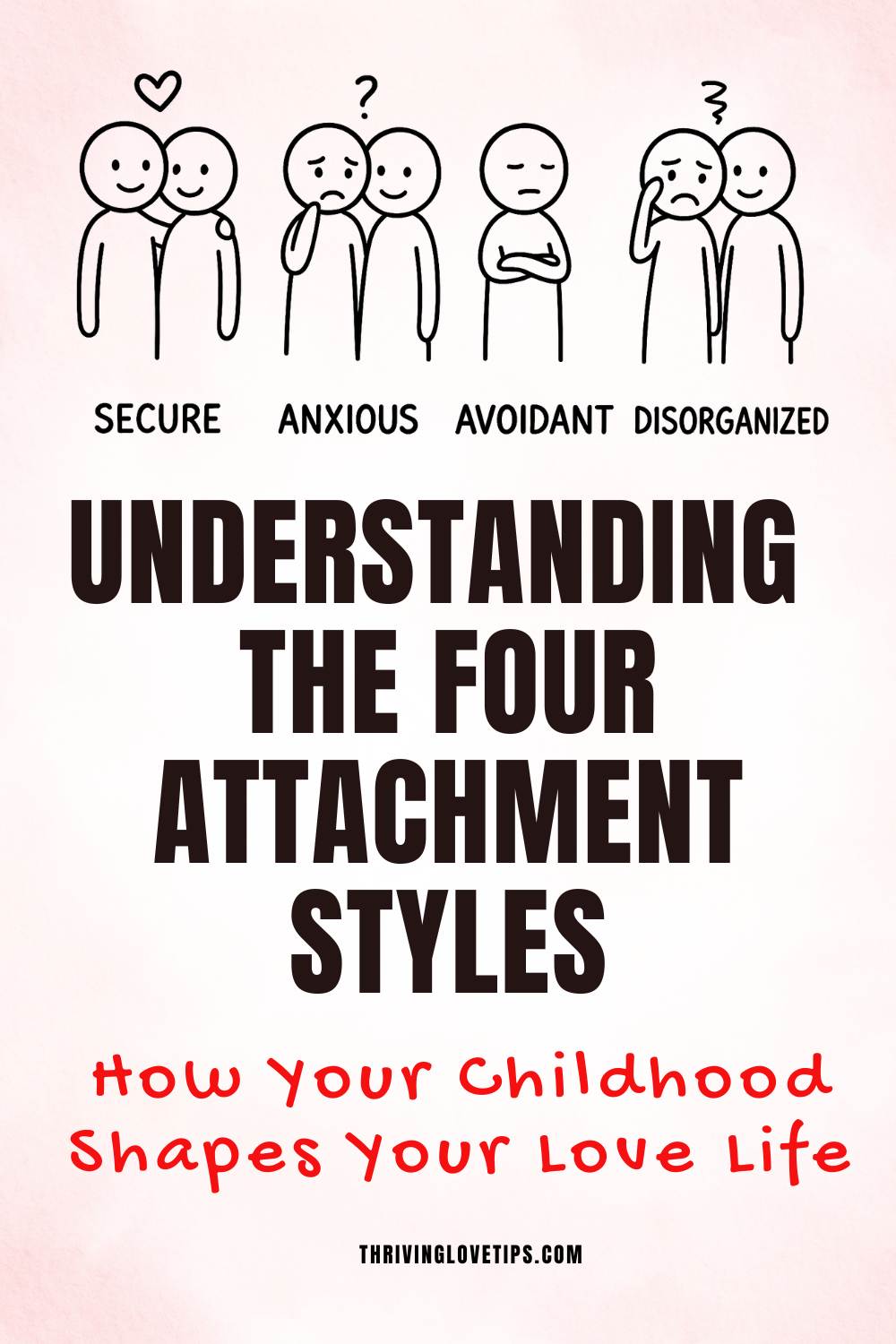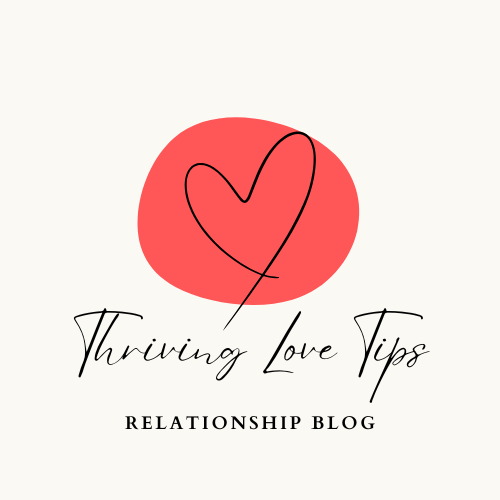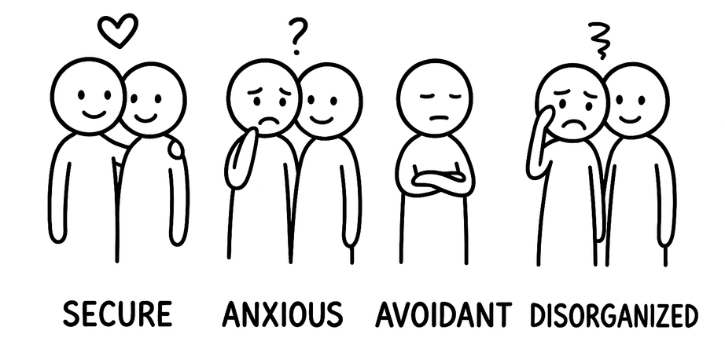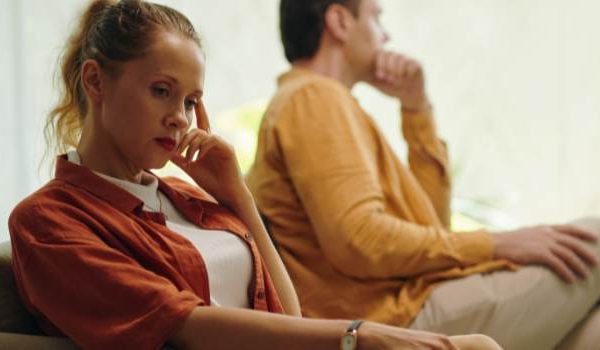I used to think my relationship struggles were just bad luck. Bad timing, wrong guys, incompatible personalities. It wasn’t until my late twenties, after yet another relationship ended with me feeling anxious and clingy while he pulled away, that a therapist friend mentioned attachment theory to me over coffee. “Have you ever looked into your attachment style?” she asked. I hadn’t. And honestly, I thought it sounded like pop psychology nonsense.
But I was desperate enough to look into it anyway. What I discovered changed everything about how I understood not just my romantic relationships, but my friendships, my relationship with my parents, and eventually, how I parent my own children. Understanding attachment styles helped me recognize patterns I’d been repeating my entire adult life without even realizing it.
Now, as a happily married woman and mom, I can look back and see exactly how my attachment style affected every relationship I had before meeting my husband, and how understanding both of our styles has helped us build something healthy and lasting. So let me walk you through the four attachment styles, what they look like in real relationships, and how they can help you understand your own relationship patterns.
What Is Attachment Theory Anyway?
First, the basics. Attachment theory was developed by psychologist John Bowlby and later expanded by researcher Mary Ainsworth. The core idea is that the emotional bonds we form with our primary caregivers in early childhood create templates for how we approach relationships throughout our lives. It’s not destiny, and it’s not an excuse, but it is a pattern that can help explain why we do what we do in intimate relationships.
There are four main attachment styles: secure, anxious, avoidant (sometimes called dismissive-avoidant), and disorganized (sometimes called fearful-avoidant). Most people lean toward one style, though we can show different styles in different relationships or shift over time, especially with awareness and effort.

Secure Attachment: The Gold Standard
Let’s start with the one everyone wants. People with secure attachment styles are comfortable with intimacy and independence. They can be close to their partners without losing themselves, and they can maintain their own identity without pushing their partners away. They communicate their needs clearly, respond to their partner’s needs with empathy, and generally trust that their relationships are stable.
In childhood, securely attached people typically had caregivers who were consistently available, responsive, and attuned to their needs. Not perfect parents (those don’t exist), but good enough parents who created a sense of safety and security.
In my friend group, I have one friend who is a textbook secure attachment. She never seemed to have the drama the rest of us did. She dated someone for a few months, realized it wasn’t working, had a mature conversation, and moved on. No stalking their social media, no wondering what went wrong, no months of agonizing. When she met her now-husband, she just… enjoyed getting to know him. She didn’t play games, didn’t wait three days to text back, didn’t analyze every word. It seemed almost boring to those of us used to relationship chaos. But watching her taught me that healthy relationships aren’t supposed to feel like emotional roller coasters.
Research by Cindy Hazan and Phillip Shaver found that about 60% of adults have secure attachment styles. If you’re in that majority, congratulations. You’ve still got work to do in relationships (everyone does), but you’re starting from a much easier place.
Anxious Attachment: The Preoccupied Lovers
This was me for most of my twenties, and if I’m being honest, I still have anxious tendencies I have to manage even in my secure marriage. People with anxious attachment crave intimacy and closeness but constantly worry that their partner doesn’t feel the same way. We seek reassurance, we monitor for signs of rejection, and we can become what I’ll diplomatically call “intense” when we feel like someone is pulling away.
In childhood, anxiously attached people often had inconsistent caregivers. Sometimes warm and available, sometimes distant or preoccupied. We learned early on that love required vigilance. If we watched carefully enough, performed well enough, or needed loudly enough, we could sometimes get the attention and comfort we craved. But we never felt secure that it would be there when we needed it.
I remember checking my phone obsessively when I was dating. If a guy didn’t text back within an hour, I’d spiral. Did I say something wrong? Is he losing interest? Should I send another message? I’d craft and delete texts for twenty minutes, trying to hit the perfect tone that was breezy and fun but also reminded him I existed. I knew, intellectually, that I was being ridiculous. But the anxiety felt so real and so urgent that I couldn’t stop myself.
The cruel irony of anxious attachment is that our behavior often creates the very rejection we fear. The more anxious we become, the more we seek reassurance. The more we seek reassurance, the more we can push partners away, especially if they lean avoidant. It’s exhausting for everyone involved.
According to research published in the Journal of Personality and Social Psychology by Chris Fraley and Phillip Shaver, about 20% of adults have anxious attachment styles. If this sounds like you, you’re not alone, and you’re not broken. But understanding this pattern is the first step to changing it.
Avoidant Attachment: The Independent Ones
If anxiously attached people are the ones texting “Are we okay?” every five minutes, avoidant people are the ones who ghost after three great dates because things started “getting too serious.” People with avoidant attachment value independence and self-sufficiency above all else. They’re uncomfortable with too much closeness, they need lots of space, and they tend to pull away when relationships start to deepen.
This doesn’t mean they don’t want relationships. Most avoidant people do want connection, they’re just terrified of depending on someone or being vulnerable. In childhood, they often learned that their emotional needs wouldn’t be met or would be rejected. Maybe their parents were cold or critical. Maybe they were told to “toughen up” when they were upset. So they learned to handle everything themselves and never let anyone get too close.
I dated several avoidant men before meeting my husband. They’d be amazing at first, all in, pursuing me intensely. Then the minute I started to reciprocate or show that I was getting attached, they’d suddenly get “really busy with work” or realize they “weren’t ready for something serious.” One guy literally said to me, “I love spending time with you, I just don’t want to feel like I have to.” Have to what? Acknowledge that we’d been dating for four months? Apparently, yes.
The anxious-avoidant trap is real and it’s brutal. Anxious people are drawn to avoidant people because the push-pull dynamic feels familiar and creates intense chemistry. Avoidant people are drawn to anxious people for the same reason. The anxious person pursues, the avoidant person distances, the anxious person pursues harder, and around and around it goes until someone finally gives up.
Research suggests that about 25% of adults have avoidant attachment styles, according to Hazan and Shaver’s work. If you’re avoidant, relationships will always require you to push against your natural inclination to protect yourself. But it’s possible to learn to let people in without losing yourself in the process.
Disorganized Attachment: The Complicated One
The final attachment style is the most complex and the most painful. People with disorganized (or fearful-avoidant) attachment both desperately want connection and are terrified of it. They have the worst of both anxious and avoidant styles. They’re the ones who say “I love you” and then don’t return your calls for a week, who moves in with you and then sabotages the relationship. Who can’t decide if they want to be with you or run for the hills, sometimes switching between the two within the same day.
Disorganized attachment typically develops when a child’s caregiver is both their source of comfort and their source of fear. Often this involves abuse, severe neglect, or unpredictable, frightening behavior. The child wants to go to the parent for comfort but the parent is the source of the fear. This creates an impossible bind that carries into adult relationships.
This is the rarest attachment style, affecting about 5-10% of adults according to research, but it’s also the most likely to require professional help to change. If this describes you, please be gentle with yourself and consider working with a therapist who specializes in attachment or trauma. This pattern isn’t your fault, but healing it will likely require more support than self-help articles can provide.
How Attachment Styles Play Out in Real Relationships
The thing about attachment styles is that they’re most visible under stress. When everything is going well, we can all look reasonably secure. But introduce conflict, distance, insecurity, or major life changes, and our attachment patterns emerge.
When my husband and I first got together, I had to consciously manage my anxious tendencies. When he needed space to process something, my first instinct was to panic and pursue. Was he pulling away? Should I check in? What could I do to fix it? Learning to sit with the discomfort of giving him space without assuming the worst was genuinely hard work.
My husband, thankfully, leans more secure, which helped me feel safe enough to gradually become more secure myself. That’s one of the beautiful things about attachment theory. While our styles are shaped by childhood, they’re not set in stone. A secure partner can help an insecure person feel safer. Therapy can help. Conscious awareness and effort can absolutely shift your attachment pattern over time.
Read also How to Build Trust in a New Relationship
Moving Toward Security
The goal isn’t perfection. Even securely attached people have moments of insecurity or distance. The goal is earned security, where you understand your patterns, you recognize when you’re falling into old habits, and you have tools to respond differently.
For me, that meant learning to pause before firing off that anxious text. To recognize when I was seeking reassurance from my husband that really needed to come from within myself. To trust that if I gave him space, he’d come back, because that’s what secure relationships do.
It also meant having honest conversations. “Hey, I notice I get really anxious when I don’t hear from you for a few hours when you said you’d call. Can we talk about what feels reasonable?” Not blaming him, not making it his job to fix my anxiety, but communicating my needs and working together on solutions.
Now as a parent myself, I think a lot about attachment theory. I can’t give my kids a perfect childhood (again, that doesn’t exist), but I can try to be consistently available, responsive, and attuned. I can help them develop the secure base they’ll carry into their own relationships someday.
Understanding attachment styles won’t solve all your relationship problems. You still need communication skills, compatible values, shared goals, and genuine love. But knowing your attachment pattern, and your partner’s, can help you understand why you react the way you do, what triggers your insecurities, and what you both need to feel safe and loved. And that understanding? That can change everything.




